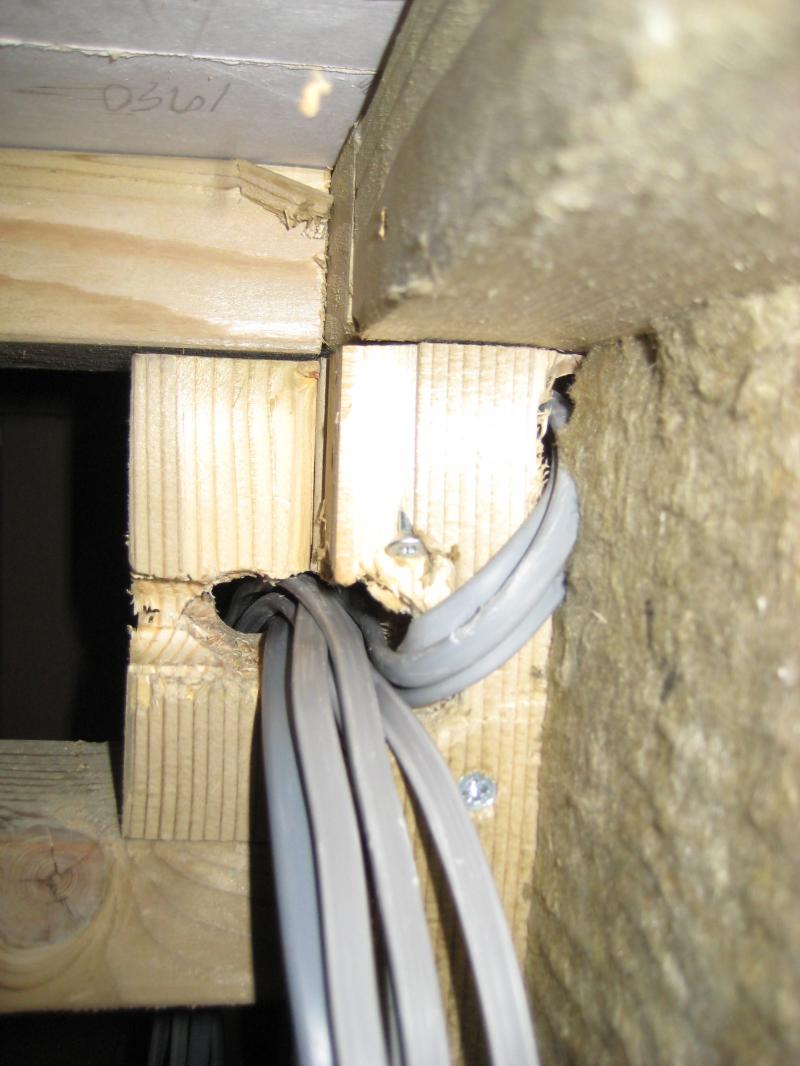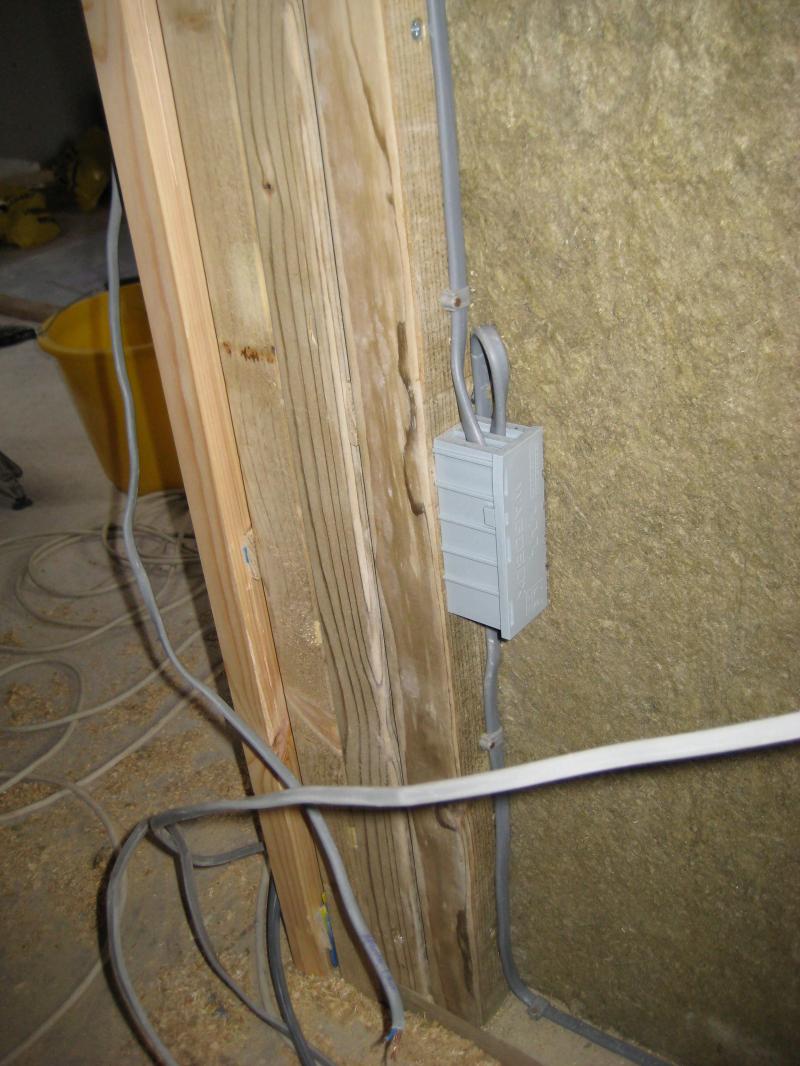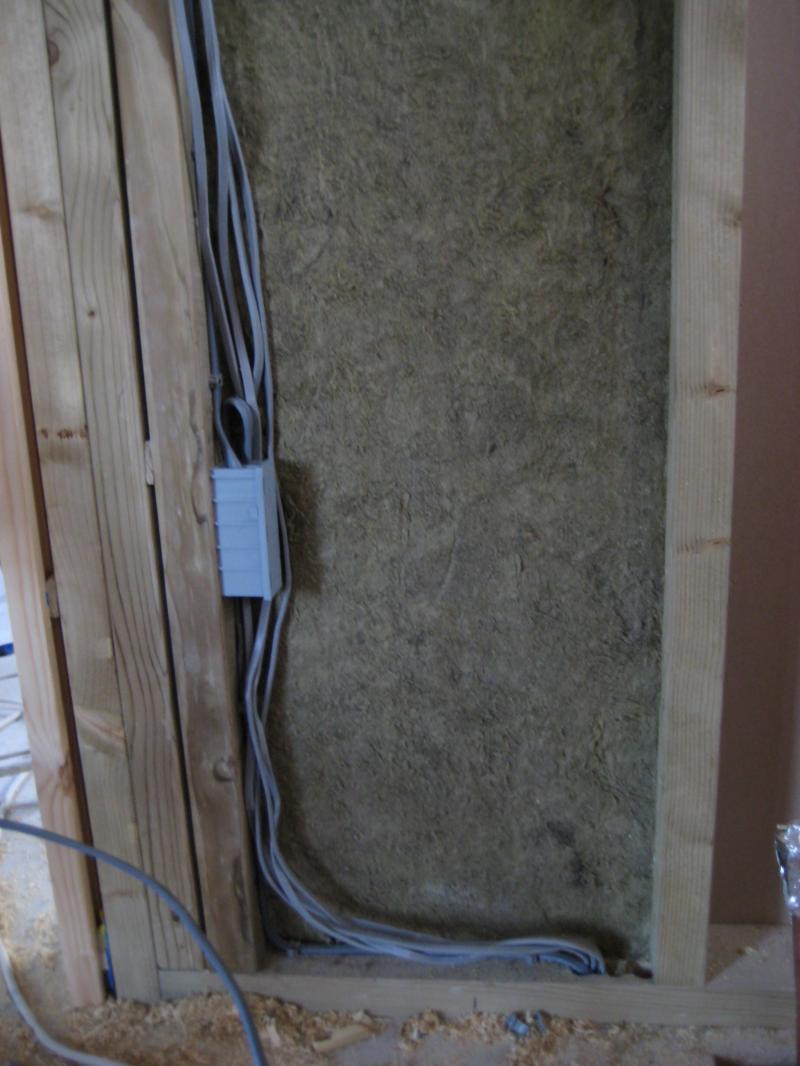Hi,
I have 6x 1.5 and 1x 2.5 T&E threaded through a hole cut through 3x 2x4 stud wall timbers - all timbers fixed together to form one thick post, the cables form quite a bunch, I understand cables that are in conduit need air free around them to 'breath', 55% free (45% for the cables - this article refers: http://www.tlc-direct.co.uk/Book/4.5.3.htm ) does this rule apply in cables through timbers - as the length is only 150mm or so ?
The stud has 50mm insulation friction fitted, so I have cables also run in the other 50mm void.
The bunch of cables then run inside the stud wall, they are not in the safe zone, run in 25x38mm conduit inside the stud , so are not 50mm from the surface - I assume metal capping one side would suffice to satisfy Regs.(dont need any other side as that is 50mm from surface.
I also have a spliced cable in the stud that will be sealed up behind the plaster board - the splice is contained in a MF BS7533 Wagobox. But with the insulation the Wagobox again is not 50mm from one side of the stud, would a small length of metal capping satisfy Regs.
Thanks
I have 6x 1.5 and 1x 2.5 T&E threaded through a hole cut through 3x 2x4 stud wall timbers - all timbers fixed together to form one thick post, the cables form quite a bunch, I understand cables that are in conduit need air free around them to 'breath', 55% free (45% for the cables - this article refers: http://www.tlc-direct.co.uk/Book/4.5.3.htm ) does this rule apply in cables through timbers - as the length is only 150mm or so ?
The stud has 50mm insulation friction fitted, so I have cables also run in the other 50mm void.
The bunch of cables then run inside the stud wall, they are not in the safe zone, run in 25x38mm conduit inside the stud , so are not 50mm from the surface - I assume metal capping one side would suffice to satisfy Regs.(dont need any other side as that is 50mm from surface.
I also have a spliced cable in the stud that will be sealed up behind the plaster board - the splice is contained in a MF BS7533 Wagobox. But with the insulation the Wagobox again is not 50mm from one side of the stud, would a small length of metal capping satisfy Regs.
Thanks




